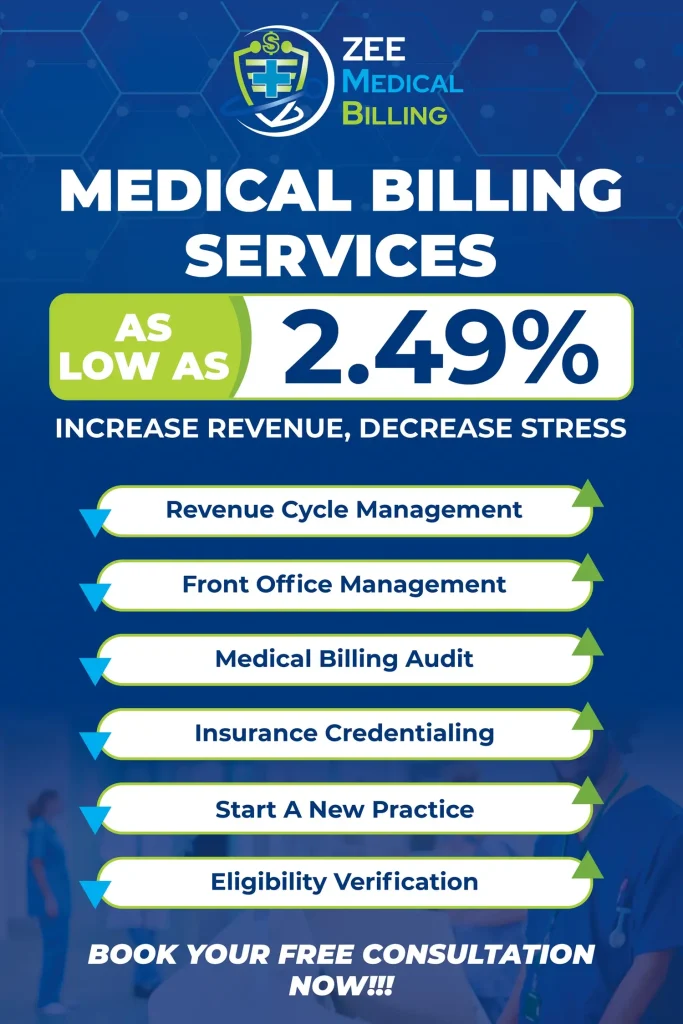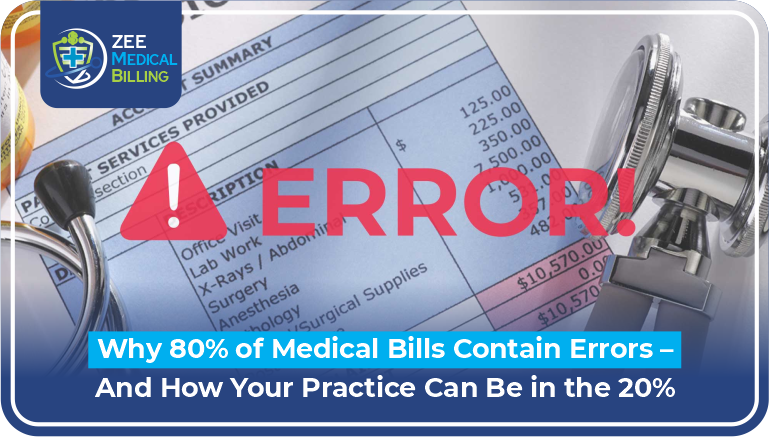Understanding medical billing modifiers is essential for accurate claims and reimbursement. People can easily misuse or misunderstand code 77. This can lead to claim denials or compliance problems.
This blog explains when and how to use Modifier 77 correctly. It also covers how it differs from Modifier 76. Additionally, it illustrates how Modifier 77 applies to CPT codes such as 77080, 77081, 77085, and others.
What is Modifier 77?
The definition of Modifier 77 states: “Repeat Procedure by Another Physician or Other Qualified Health Care Professional.” It shows that a different provider performed the service or procedure again. This provider is not the one who did it first.
Modifier 76 shows that the same provider did a repeat procedure. Modifier 77 informs the payer that another professional did the same procedure. This happened on the same day or during the same care episode.
Also Read: When and How to Use Modifier 76 in Medical Coding?
77 Modifier Description
- CPT Code Context: Often appended to imaging, diagnostic, and radiological procedures.
- Purpose: To inform payers that the repeated service was necessary and valid, even though another qualified provider did it.
- Example: A patient undergoes an X-ray in the ER and is then referred to radiology, where another provider performs a second X-ray on the same day.
When Should Modifier 77 Be Used?
Modifier 77 should only be used under specific, well-documented conditions:
Appropriate Use Cases:
- The same CPT procedure is repeated on the same day.
- A different physician or qualified professional performs the second procedure.
- The repeat procedure is medically necessary.
- Both services are distinct and separately reportable.
Examples of Modifier 77 Use:
| Scenario | Example CPT Code | Description |
| Repeat bone density scan by radiologist after primary care order | 77080 | Dual-energy X-ray absorptiometry (DXA) scan |
| Repeat CT scan at a specialist’s clinic | 77014 | CT image guidance for radiation therapy |
| Repeat MRI reviewed by neurologist | 77301 | Radiation treatment planning |
CPT Codes Commonly Associated with Modifier 77
Modifier 77 can be used with several types of CPT codes. Here are a few commonly associated ones:
CPT 77080
- Description: A DXA scan is used to measure bone density.
- Use with Mod 77: If the scan is repeated by a different provider on the same day.
CPT Code 77014
- Description: CT guidance for radiotherapy.
- Use with Mod 77: If an oncologist repeats it after the initial setup by another provider.
CPT Code 77301
- Description: IMRT planning (Intensity-Modulated Radiation Therapy).
- Use with Mod 77: If another radiation oncologist reassesses treatment planning.
CPT Code 77081 and CPT 77085
- Description: Peripheral and vertebral bone density measurements.
- ICD 10 Codes That Cover 77081: Include osteoporosis (M81.0), postmenopausal status (Z78.0), etc.
- Use with Modifier 77: If the patient is re-scanned in another department on the same visit.
Documentation Requirements for Modifier 77
Accurate documentation is key to justify the use of Modifier 77:
- Clearly state the reason for the repeated procedure.
- Specify why another provider got involved.
- Include both providers’ notes and interpretations.
- Show the clinical necessity behind the repeat.
Payers may deny claims if the repetition seems unnecessary or duplicative without clinical reasoning.
Modifier 76 vs Modifier 77 – Key Differences
| Feature | Modifier 76 | Modifier 77 |
| Same Procedure? | Yes | Yes |
| Same Provider? | Yes | No |
| Reason for Repeat | Medical necessity | Medical necessity |
| Common Use | Monitoring or reevaluation by same provider | Independent second opinion or referral |
This distinction is essential. Using the incorrect modifier may result in delays in reimbursement or audits.
Also Read: How and When to Use Modifier 50 in Medical Coding?
Rate Code 7778: How Does It Relate?
While not directly related to Modifier 77, Rate Code 7778 can appear in contexts involving radiological services. A payer-specific billing code is often tied to outpatient services, such as imaging or radiation.
- Double-check with specific payers to determine if you must report rate codes alongside CPTs and modifiers.
Best Practices to Avoid Denials
To ensure your claim with Modifier 77 is accepted:
- Verify that provider NPI numbers are different.
- Confirm that someone did not bundle the second procedure.
- Avoid using Mod 77 for the same session unless it’s distinct.
- Double-check that clinical notes indicate timing and purpose.
FAQs
What is Modifier 77?
Modifier 77 is a billing code. It indicates that a different provider performed a repeat procedure instead of the initial one. It communicates to insurance payers that the second procedure was necessary and should be reimbursed separately.
How is Modifier 77 different from Modifier 76?
While both indicate repeat procedures, providers use Modifier 76 when they perform the service again. Modifier 77 applies when a different provider performs the repeat. This distinction impacts the billing and reimbursement of the service.
Can we use Modifier 77 with radiological procedures, such as CPT 77080?
Yes. Healthcare providers commonly use it in conjunction with radiological CPT codes, such as 77080 and 77014. If a patient has a bone density scan done again by another department on the same day, use Modifier 77. This helps with billing.
Does Modifier 77 affect reimbursement?
It can. When used correctly, it allows for appropriate payment for both the original and repeated service. However, incorrect use—such as applying it to the same provider or without clinical necessity—can lead to denials.
What documentation is required to support Modifier 77?
You should include the reason for the repeat, provider names, and their credentials. Additionally, include medical necessity and any relevant notes regarding timing and context. The more specific your documentation is, the better your chances of getting the claim approved.
Conclusion
Modifier 77 plays a critical role in medical billing by distinguishing repeated services performed by different providers. It ensures accurate reporting and reimbursement when procedures such as CPT 77080, 77014, or 77301 are performed more than once in a patient’s care. Understanding when to use Modifier 77—and how to document it correctly—can prevent billing errors and improve compliance. Always verify payer-specific rules and keep your coding knowledge current to avoid costly mistakes.
Need Expert Medical Billing Services?
Zee Medical Billing provides professional billing solutions tailored to healthcare providers across the nation. In addition to providing top-tier support from our main office, we proudly serve clients in 19 states: Illinois, Indiana, California, Kentucky, New York, Washington, Georgia, Alabama, South Carolina, Texas, Pennsylvania, Ohio, New Hampshire, Nevada, Massachusetts, Hawaii, Arizona, and Colorado. Whether you’re looking to streamline your revenue cycle or improve claims accuracy, you can reach out to us to learn more about how we can support your practice.









